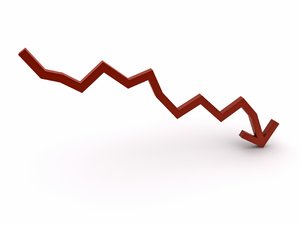How Can a Fixed Interest Investment Fall In Value?
 Some investors are puzzled by the way bonds (or fixed interest securities) can fall in value.
Some investors are puzzled by the way bonds (or fixed interest securities) can fall in value.
On the surface it appears to make little sense, as a bond provides regular interest payments (coupon) and the initial investment is returned at maturity (default risk aside). How can an investor lose? A closer look provides the answers.
Fixed interest, like any other market, experiences volatility. Returns from fixed interest are usually less volatile than those from the sharemarket. Over the term to maturity, a fixed interest security will normally provide a stable return. However, there is no guarantee. For example, the value is exposed to short-term volatility as the assets are valued by the market on a daily basis. The fortunes of fixed interest, income distributions and capital movements, are closely linked to the performance of world markets.
A bond is essentially a loan. As with any loan, the borrower must compensate the lender for the use of the funds. This is in the form of interest payments to the lender (the coupon), and it follows that as perceived risk increases, so does the level of compensation required by the lender.
When pricing a bond, the opposite applies. As the perceived risk increases, the price a buyer will pay decreases. Why? Think about buying a car. You have narrowed your search down to two identical cars, one has air bags, the other not. Obviously, you will be prepared to pay a little more for the car with the air bags as that ‘investment’ carries less risk. As risk goes down, price goes up. It follows that yield and price are inversely related.
Concluding that for a bond to fall in value, the yield must increase as lenders are seeking greater compensation. Lenders (or investors) are continuously reassessing the risks involved with all bonds on the market and, as such, yields (total return) fluctuate up and down.
The yield on a particular security can be influenced by a number of factors including credit ratings, general economic environment and inflationary pressure expectations. When yields move upwards, fixed interest securities fall in value.
Three keys to sensible investing. While there are no guarantees as to what the future will bring, there are a few key lessons to be learned:
- Investing in longer-dated (two, three or five year) fixed interest investments has provided higher returns than leaving money in short-term deposits.
- When returns look poor it is normally a good time to invest. Interest rates will have risen and you can now be investing at higher rates.
- When investing for the medium to longer term, stick to your strategy. Taking funds from investment after a period of poor performance is highly likely to ensure you miss out on the capital gains when interest rates fall.
- Last updated on .